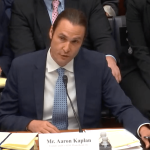Xinhua/Wang Ying via Getty Images
- Zillow announced Tuesday it will close its iBuying unit and lay off 25% of staff after huge losses in the chaotic market.
- It was using algorithms to find homes for fast flipping, but the market’s wild price changes were just too unpredictable.
- The volatility “far exceeds what we anticipated,” CEO Rich Barton said, adding that it made algorithmic buying too risky.
Zillow thought it had revolutionized the homebuying experience with advanced algorithms. But it was no match for the pandemic-era market.
Zillow Offers was meant to be the company’s secret weapon for flipping homes. Launched in 2018, the business used algorithms to value homes, purchase certain properties, and sell them soon afterward for a healthy profit. The company aimed for this instant-buying, or iBuying, arm to become a new cash cow. It was targeting annual revenue of $20 billion.
But maybe Zillow should have paid attention to how house-flipping grew smaller and smaller during the pandemic. Of the hundreds of homes listed through Zillow Offers, nearly 64% were being marketed for less than Zillow bought them for, according to Insider’s analysis of Zillow’s inventory in October. The company announced on October 17 it would pause buying homes for the rest of the year. Mere weeks later, Zillow said it would shut down the iBuying business entirely.
The problem: Zillow’s formula couldn’t beat the white-hot market.
“Fundamentally, we have been unable to predict future pricing of homes to a level of accuracy that makes this a safe business to be in,” Zillow CEO Rich Barton said in a Tuesday earnings call, alluding to how prices have been rising so fast, the algorithm actually ended up overpaying for homes at massive scale.
In the company’s third-quarter earnings report, Barton noted the unpredictability of forecasting prices “far exceeds what we anticipated,” and that growing Zillow Offers “would result in too much earnings and balance sheet volatility.” In a sign of what an existential risk this unit was becoming to the business, Zillow also announced plans to lay off 25% of its staff.
Forecasting the pandemic-era market is no small feat. Prices have surged at record pace through much of 2021 as buyers rushed to capitalize on low mortgage rates. Decades of underbuilding left the market with a massive shortage of homes. When new houses hit the market, intense competition has fueled bidding wars that only drive prices higher.
The rally has cooled off in recent months. Prices rose a record 19.8% year-over-year in August, according to the S&P CoreLogic Case-Shiller home price index. That matched the inflation seen in July, marking the first time in five months that price growth didn’t accelerate.
Month-over-month readings show a more dramatic slowdown. US home prices gained 1.2% in August, signifying a fourth consecutive month of slowing price growth and the smallest one-month jump since February.
The data suggests Zillow paused its instant-buying arm as the price boom started to ease. Its third-quarter report reflects as much. The company will write down about $304 million in the segment that includes Zillow Offers. The sum reveals just how large a hit the company took by buying homes at higher prices than it expects to sell them for.
The damage isn’t expected to end in the third quarter. Zillow also anticipates between $240 million and $265 million in losses in the fourth quarter from homes it plans to buy, the company said in its earnings report.
Underestimating the housing market’s chaos will come at a steep cost for the company. Zillow expects to lose nearly $500 million from its Homes segment in just six months. But with major banks expecting volatility to last through 2022, it could be a case of “better late than never.”
Powered by WPeMatico





